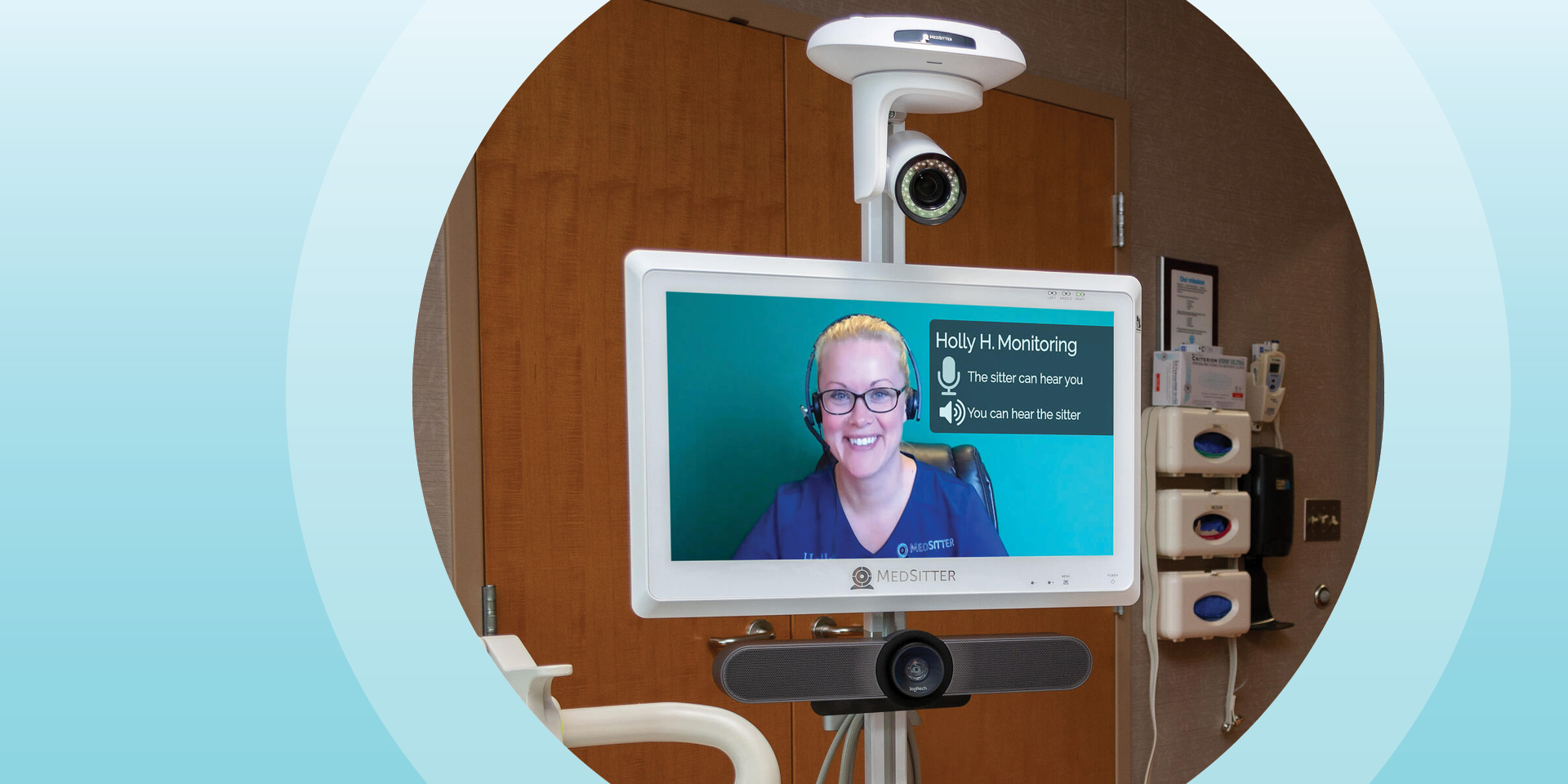We are introducing a new virtual patient observation system at Doylestown Hospital that will allow us to continuously monitor patients who may be at risk for falls.
Virtual patient observation is an emerging healthcare technology being used in a growing number of hospitals and nursing facilities. These systems enable video monitoring of certain patients in their rooms, which has been shown to reduce their risk of falls. Such capabilities also contribute to staff safety, lessening their exposure to potentially violent patients.
At Doylestown Hospital, we reviewed several virtual patient observation programs, checking functionality and customer satisfaction. We have implemented MedSitter Remote Patient Observation, which has data to show a reduction in patient falls by typically 20%. Medsitter is available in our Emergency Department, Observation, and Inpatient areas.
Our Senior Executive Director of Hospital Operations, Matthew Costello, explains that, “We will evaluate patient and staff satisfaction with the new system and determine if it actually improves our ability to safely and effectively monitor more patients and reduce patient falls.”
Which Patients Can Benefit From MedSitter
As part of the implementation process, we needed to determine which patients would be best served by MedSitter. “Based on journal articles, other facility practices, recommendations from MedSitter, and hospital leadership consensus, we developed inclusion criteria,” says our Nursing Education Coordinator, Kim Carson, MSN, RN.
The inclusion criteria for MedSitter usage are based on the clinical judgment of the primary RN caring for the patient. If the RN identifies behaviors or situations that put the patient at higher risk for injury or raise other safety concerns, then a higher level of observation could be beneficial.
Some examples of behavioral or situational risks that would indicate using MedSitter are: patients assessed to be at acute risk for falls; those with cognitive impairment such as dementia, delirium, or a traumatic brain injury; or patients going through acute alcohol or substance withdrawal. If there is concern for the safety of the bedside care team, MedSitter can also be an effective tool in continuous, remote monitoring of patient welfare.
We have developed exclusion criteria for MedSitter usage as well. Patients who are at risk for doing intentional harm to themselves would not be candidates for virtual observation. Additionally, MedSitter cannot be used to fulfill a physician order for one-to-one observation. Such patients must be monitored by a healthcare worker in-person, in-room.
How MedSitter Works
When our care team decides that a patient would recover better with virtual observation, the MedSitter cart is placed in their room. This in-room device is equipped with a camera with night vision and motion detection and a 22-inch, medical-grade monitor, providing two-way audio and video communication streamed through the hospital’s secured network. The device does not record audio or video at any time and can be switched to privacy mode as needed.
One trained observer, called a Patient Safety Observer, monitors the patient from a private sitter station. Our Patient Safety Observers have undergone comprehensive training by MedSitter and Doylestown Health Nursing.
The Patient Safety Observer can monitor up to 10 patients at a time. Each patient is able to see their Observer’s face, hear their voice, and communicate with them in real time. Cross-language communication is also possible, using pre-recorded prompts with native language, text-to-speech, and American Sign Language.
The Patient Safety Observer verbally interacts with the patient to remind them of potentially unsafe activities, provide companionship and emotional support, and communicate patient needs to the appropriate bedside care provider.
“Patients will know that they have someone to talk to all of the time without waiting for staff to respond to a call bell,” says Matt Costello.
About Doylestown Health
Doylestown Health is a comprehensive healthcare system of inpatient, outpatient, and wellness education services connected to meet the health needs of the local and regional community. The flagship of Doylestown Health is Doylestown Hospital, a not-for-profit, community teaching hospital with 245 beds and a medical staff of more than 600 providers who deliver the highest quality care in over 50 specialties. Renowned locally, regionally, and nationally, Doylestown Hospital provides superior healthcare and offers advanced surgical procedures, innovative medical treatments, and comprehensive specialty services. Serving Bucks County for over 100 years, Doylestown Hospital is proud to educate and train the next generation of physicians through its family medicine residency program. Ranked as one of the World’s Best Hospitals by Newsweek and 9th in Pennsylvania, Doylestown Hospital is distinguished in both infection prevention and patient experience. Doylestown Hospital is the only hospital in Pennsylvania to achieve 18 consecutive ‘A’ grades for patient safety from Leapfrog Hospital Safety Grade. Learn more at doylestownhealth.org.
